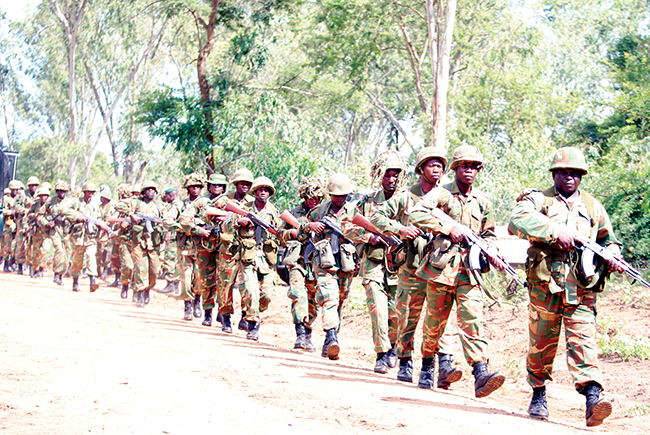Who are the Infantry?

In my previous article, I looked at three myths about the military career that are false. Ironically, in the process of debunking the three, another seems to have surfaced, that is, that of the infantry. Indeed, the infantry also known as 'foot soldiers' have often been viewed from the perspective of Field Marshal Montgomery who described them as 'the least spectacular of all arms'. Yet even Montgomery himself admitted that without the infantry, 'nothing can be done, nothing at all'. The term 'infantry' borrowed from the Latin 'infantem', meaning 'foot solder' and was used mainly after the 15th century to described groups of foot soldiers with standardized military equipment, training and discipline requisite for battlefield formations and maneuvers. Although usage of the word begun in the 15th century, warriors of antiquity who fought with an assortment of improvised weapons are equally referred to as infantry. Indeed, prior to the first ancient empires (2500-1500 BC), warriors were essentially armed mobs equipped with hunting tools and all sorts of lethal paraphernalia. As a word to describe an organized type of combat troops, the word 'infantry' dates back to 1579 in the French 'infantrie' and Spanish 'infanteria' both which mean 'youth'. Further, it was only until the 1800s that the individual-soldier term 'infantryman' was coined.
To be sure, when the word was coined, most foot soldiers or infantrymen were usually the new, young recruits who were too-inexperienced or too low in rank to be made part of the cavalry. In addition, before 2000 BC when chariots were adopted on the battlefield, all armies were purely infantry. More specifically, infantry was the primary combat arm of the classical period (1730-1820) with the so-called 'Immortals' of the Persian Empire being the epitome of such troops. The Immortals were an elite heavily-armed and deadly infantry unit of exactly 10,000 soldiers of the Achaemenid Empire. The unit was referred to as the immortals because every killed, seriously wounded or sick member was immediately replaced in order to maintain the fighting strength of 10,000.
During the Middle Ages (5th - 15th Century), the cavalry (horse-mounted soldiers) dominated the battlefield with most members of such fighting units being drawn from the privileged aristocracy. This meant that infantry levies were raised from commoners and suffered greatly with regards to advancement in infantry tactics and weapons. Indeed, it was only until the early modern period (roughly 1500-1800) that the range of infantry weapons increased to include; long spears or halberds, the longbow, and firearms (the matchlock). Thus, by the 18th century, the standard infantry line was adopted by most European armies and was three ranks deep. This trend continued until World War I (1914-1918) and was adopted by most Africa armies and the African Askari.
Throughout history, given the fact that the primary role of the infantry has always been to search out and destroy the enemy as well as to hold ground, it is no surprise that infantry has been one of the most dangerous jobs on the battlefield. Moreover, before railroads were developed in the 19th century, long distance trekking was how the infantry got to the battlefield. However, during World War II (1939-1945), heavy casualties suffered by the infantry during movement led to the development of mechanized infantry who use armored vehicles for transport. It was also during WW II that the use of paratroopers who were basically infantry soldiers that jumped from airplanes into battle and lorry borne infantry became common.
In the post-modern period (from late 20th century) the infantry has evolved to depended more on technology other than its own feet for delivery into battle. Without a doubt, most present-day infantry is either motorized or mechanized and are supported by armored fighting vehicles, artillery, and aircrafts with very few terrain types (e.g. urban/close terrain) requiring the use of light infantry which does not use Armored Fighting Vehicles (AFVs). Furthermore, from being largely armed mobs, in modern times the infantry has advanced to include units with special tactics named for their roles, such as Commandos (Special Forces), Rangers, Snipers, and Marines. Admittedly, due in part to the sophistication of modern warfare theatre, infantry numbers have diminished considerably. However, due to the intrinsic nature of their work which now includes disaster relief, basic service delivery and humanitarian/peacekeeping work, the infantry have become highly sought after and extremely important both in war and peace-time. As a result, some of the attributes that have come to defined the modern infantry include; Good fitness levels, excellent communication skills, confidence, self-discipline and the ability to 'think off one's feet' and stay calm under pressure. In short, the army's infantry remains its most essential component and even today, whether spectacular or not, no army can achieve anything without the infantryman.
